Transition Repeater Powertrain
Wheel Size: 29” or 27.5” rear / 29” front
Travel: 170 mm rear / 170 mm front
Geometry Highlights:
- Sizes offered: S, M, L, XL
- Headtube angle: 63.5º
- Effective seat tube angle (Size L): 78.2º
- Reach (Size L): 480 mm
- Chainstay length: 455 mm
Drive System Highlights
- Motor: SRAM Powertrain
- Torque: 90 Nm
- Power: 680 Watts (peak power)
- Battery: 720 Wh
- Display: SRAM Eagle Powertrain AXS Bridge Display
- Remote: SRAM AXS Pods
Frame Material: Carbon Fiber
Price: Complete bikes $10,499 to $11,999
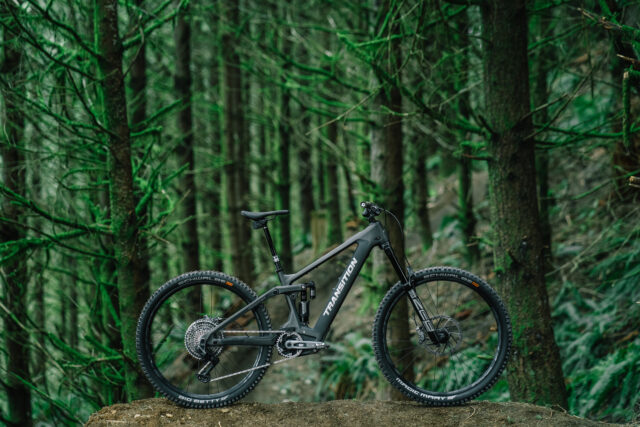
Intro
The new Transition Repeater Powertrain joins Transition’s growing eMTB lineup (alongside the original Repeater, which is sticking around for the time being, and the lightweight, lower-power Relay) as the longest-travel, most descending-oriented eMTB they offer.
The big news with the new Repeater Powertrain is, of course, the SRAM AXS Eagle Powertrain that will be delivering the watts, but there’s also more travel, updated geometry, and a host of other tweaks to go over, too.
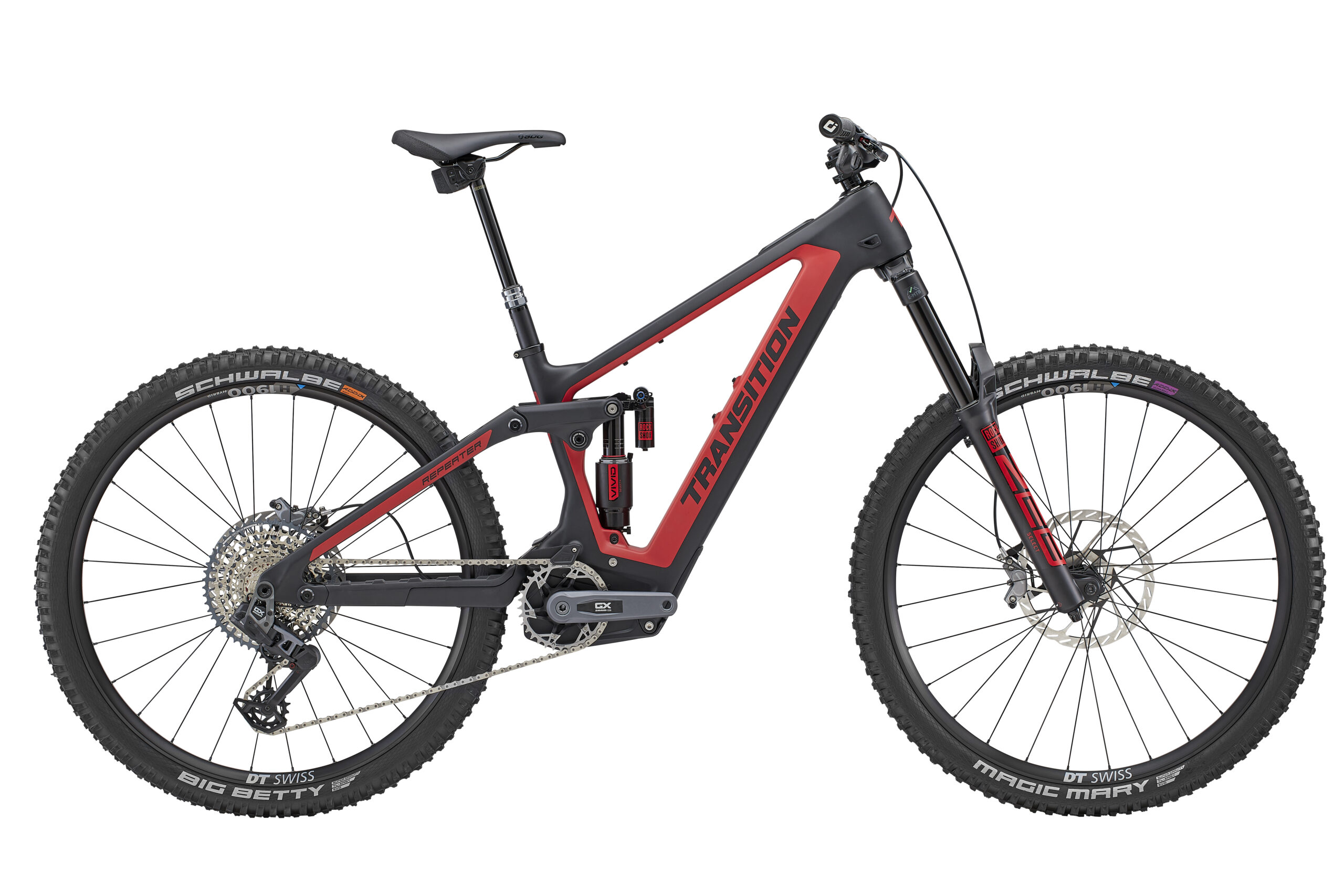
The Frame
The Repeater Powertrain’s frame is all new, but besides the obvious differences in drive-system mounting, it still bears a strong resemblance to the existing Repeater frame. The geometry updates, which we’ll get into below, are subtle, and the suspension travel has increased from 160 mm to 170 mm front and rear. Transition has added a flip chip to correct the geometry when running a 27.5’’ rear wheel (rather than the stock dual-29″ configuration), and they state that the geometry remains very close, with the exception of a slightly lower bottom bracket and a marginally slacker head tube angle.
The Repeater’s 205 mm x 65 mm shock continues to be mounted vertically and delivers 170 mm of travel from the Horst-Link suspension layout (what Transition calls “Giddyup Suspension Design”). Transition hasn’t published detailed kinematic info, but they have stated that there is 26.6% total progression, a touch more than the original Repeater, which is stated to be just under 26%.
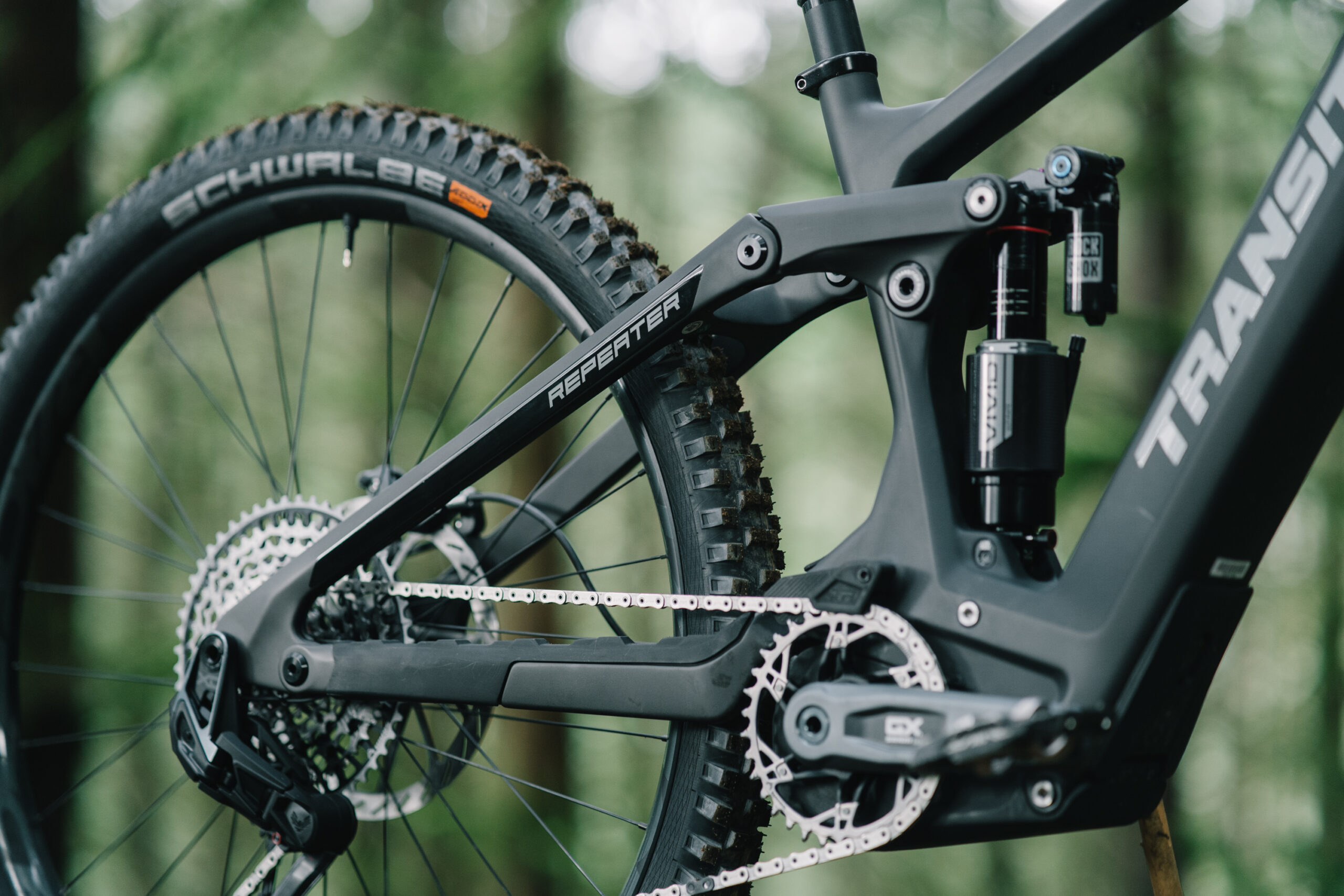
Transition has ditched the headset cable routing found on the existing Repeater in favor of more traditional head tube ports. We can assure you that no tears were shed here as a result. Even though the Repeater Powertrain comes with a wireless shifter and dropper post (so only the rear brake hose needs to be routed), there are ports on either side of the head tube — most likely to accommodate rear brake cable routing for either left or right brake lever placement, or perhaps for a cable-actuated dropper post.
Other frame details include an integrated chain guide, tool storage mounts under the top tube, water bottle mounts on the down tube, improved chainstay protection, and the new “Loam Hat.” The Loam Hat appears to be a mudguard mounted to the frame just over the swingarm pivot to protect the pivot area from contamination. The frame carries a lifetime warranty for original owners, and also a crash replacement policy that covers both original and second-hand owners.
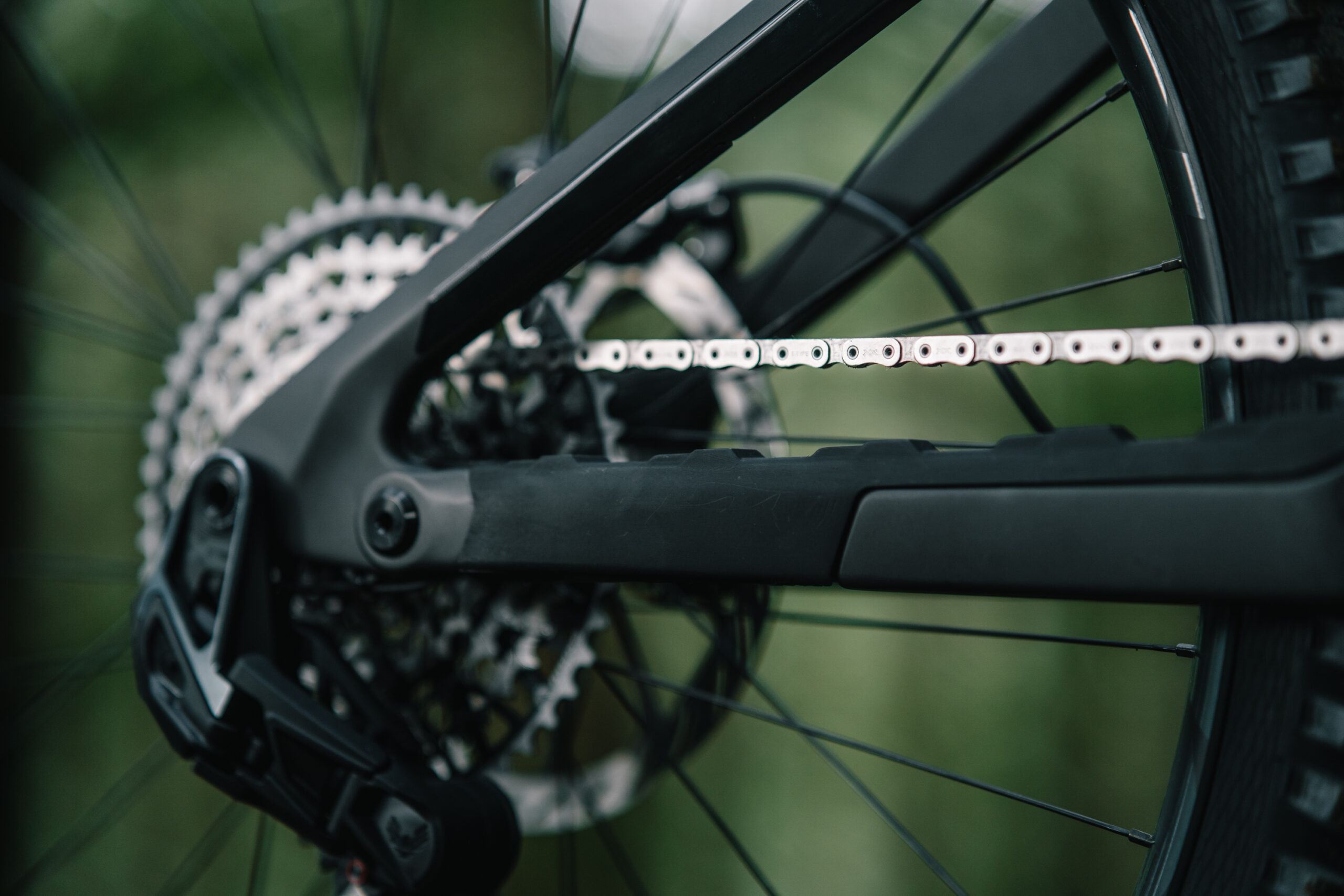
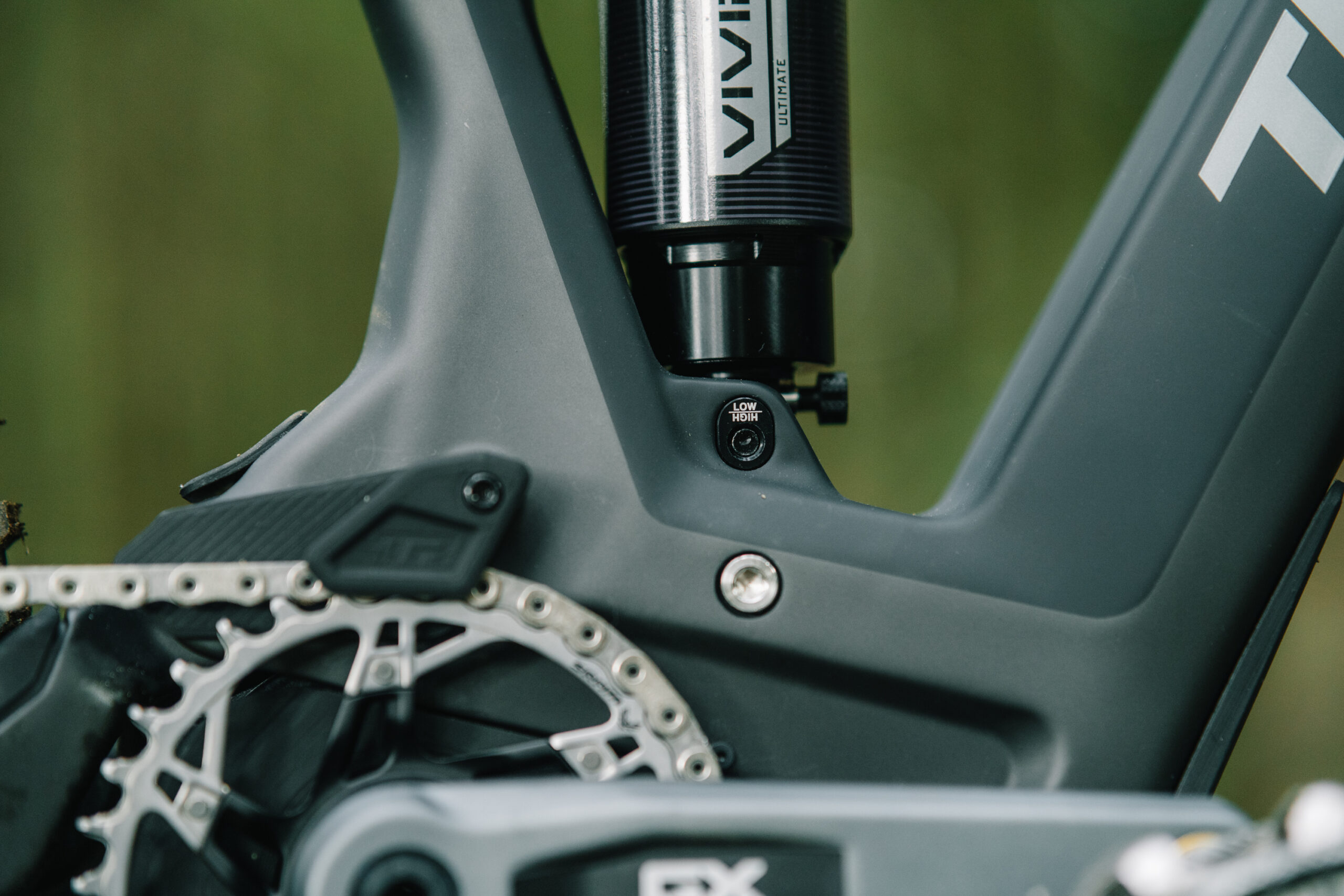
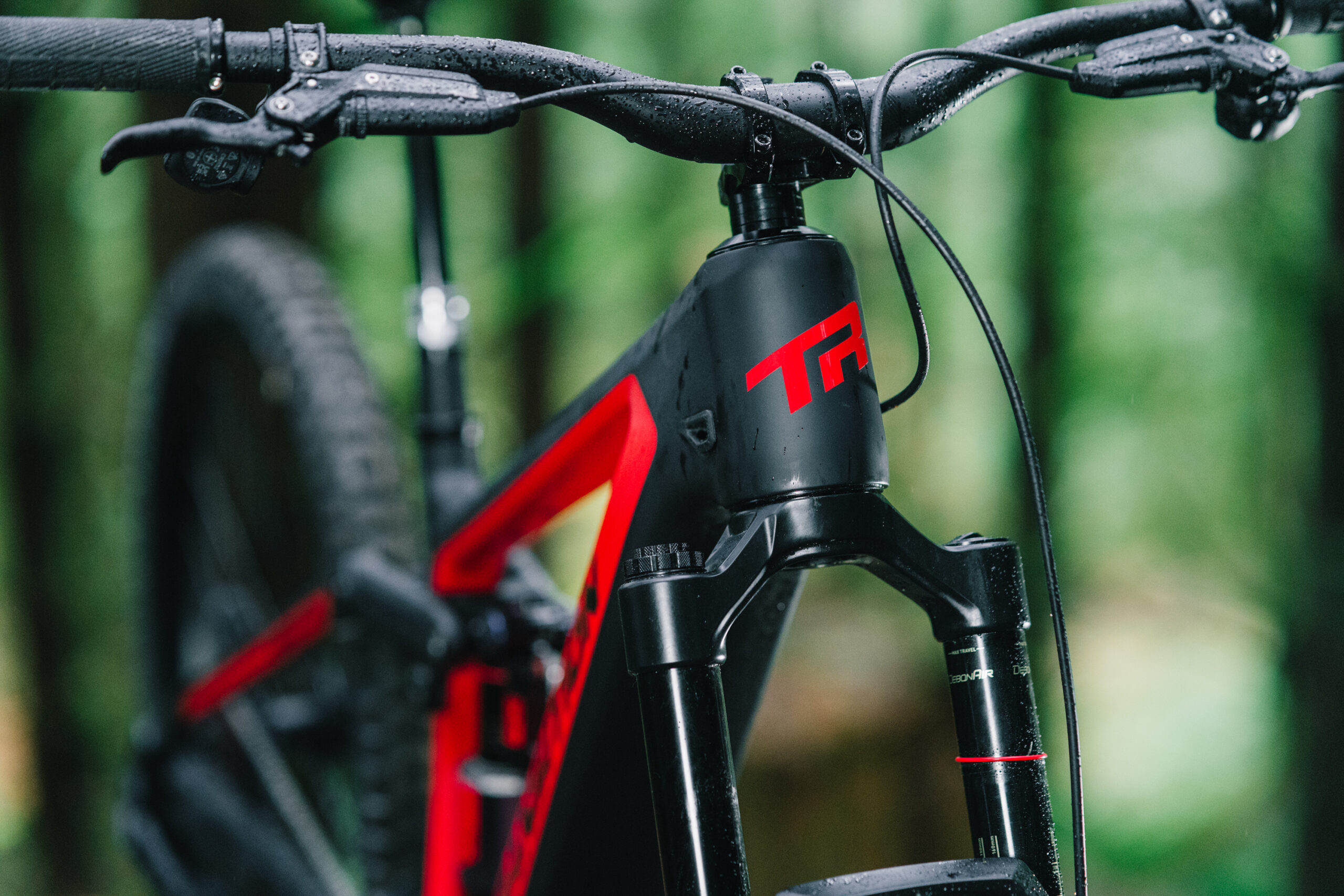
Drive System
Transition is now the third company to release an eMTB equipped with the SRAM AXS Eagle Powertrain, behind Nukeproof and GasGas. Of course, we do expect this list to grow, but as it stands now, these are your options if you want a SRAM-powered eMTB.
Check out our First Look for a detailed explanation of the Eagle Powertrain, but here’s a quick overview: the Brose-made Drive Unit is rated at 90 Nm of torque and 680 watts of peak power. It has an integrated top tube display, two ride modes, is controlled by SRAM AXS Pods on the left and right side of the handlebar, and when paired with SRAM’s AXS Transmission (as it is on both the Repeater Powertrain builds), will feature Auto Shift and Coast Shift capabilities.
SRAM has put an emphasis on simplicity in the design of the Eagle Powertrain, so there aren’t many options when it comes to configurations.
One of the few options is battery size, which comes in either 630 Wh or 720 Wh form, and Transition has opted for the larger 720 Wh battery on the Repeater. I’m in favor of this decision, since I know 630 Wh would most likely not deliver the range I’m looking for from this sort of eMTB. SRAM will be offering a 250 Wh range extender as an aftermarket accessory, but I would prefer the majority of my rides to be attainable with just the main battery.
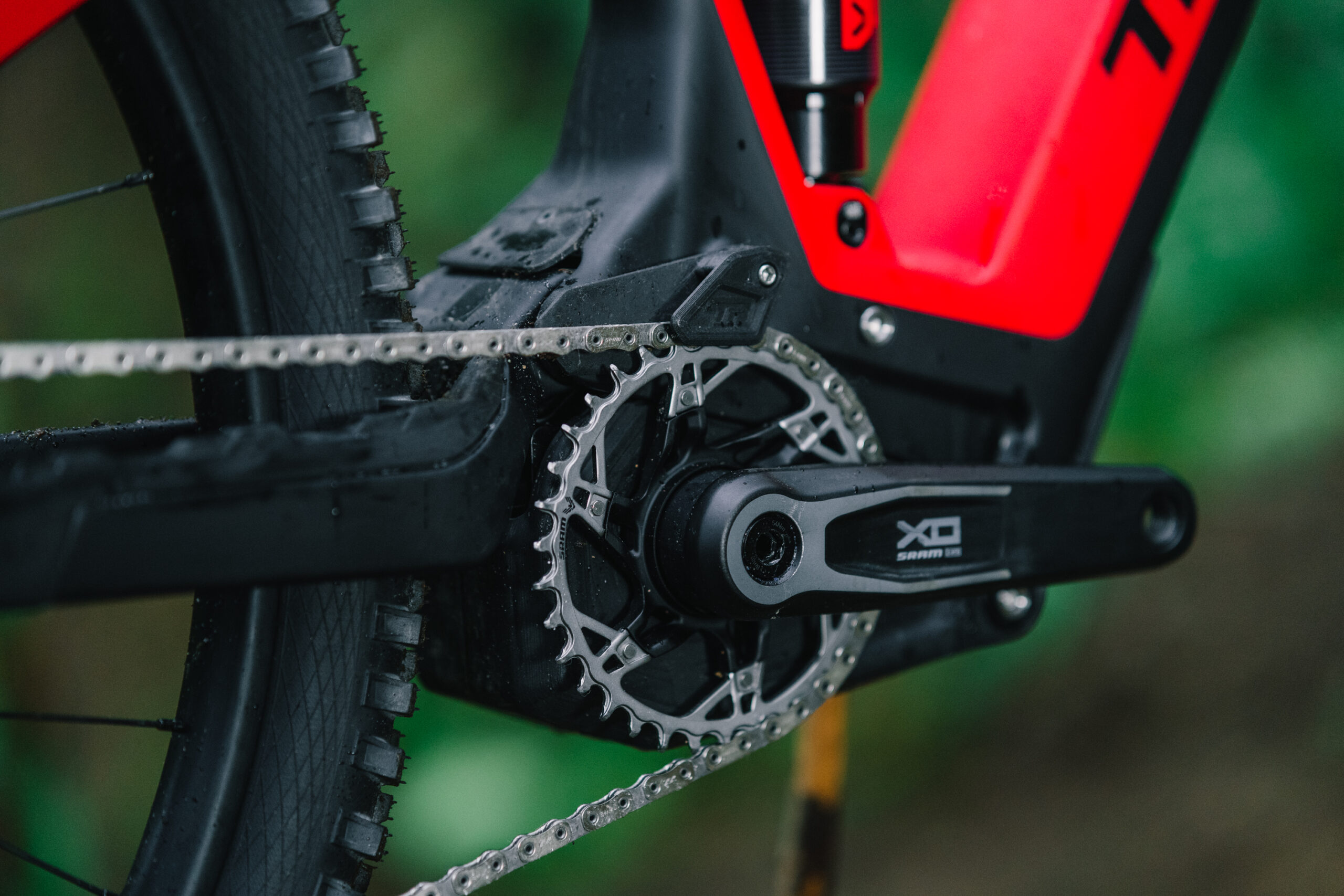
The only other main option is how to power the rear derailleur. SRAM offers the Extension Cord to power it from the main battery, or it can be powered from a standard AXS battery. Transition chose to use the extension cord, which personally is what I would prefer as it is one less battery to worry about charging. It’s nice to have multiple AXS batteries on a bike if you need to interchange them, but I find it just as easy to keep a spare in my hip pack.
As with other SRAM AXS components, there is quite a bit of customization available via the AXS App — you can adjust the power of the Range and Rally Modes as well as change the Pod button assignments, and more — again, check out our First Look on the Powertrain for a more detailed rundown.
Fit & Geometry
The Repeater Powertrain is available in four sizes: Small, Medium, Large, and XL. Reach numbers are 425 mm for the Small, 455 mm for the Medium, 480 mm for the Large, and 510 mm for the XL — these numbers are identical to the original Repeater, as are the 455 mm chainstays. The 63.5º head tube angle is 0.5° slacker and the seat tube angle got a wee bit steeper (78.2º vs 77.4º for a size Large). Stack height got a little taller across the board and the Repeater Powertrain gained 5 mm of bottom bracket height over the original Repeater (345 mm vs 340 mm).
The differences between the Repeater Powertrain and Repeater are all very much in line with what we would expect given the increase in travel, and the numbers are also in the range of what we’re seeing in this travel category.
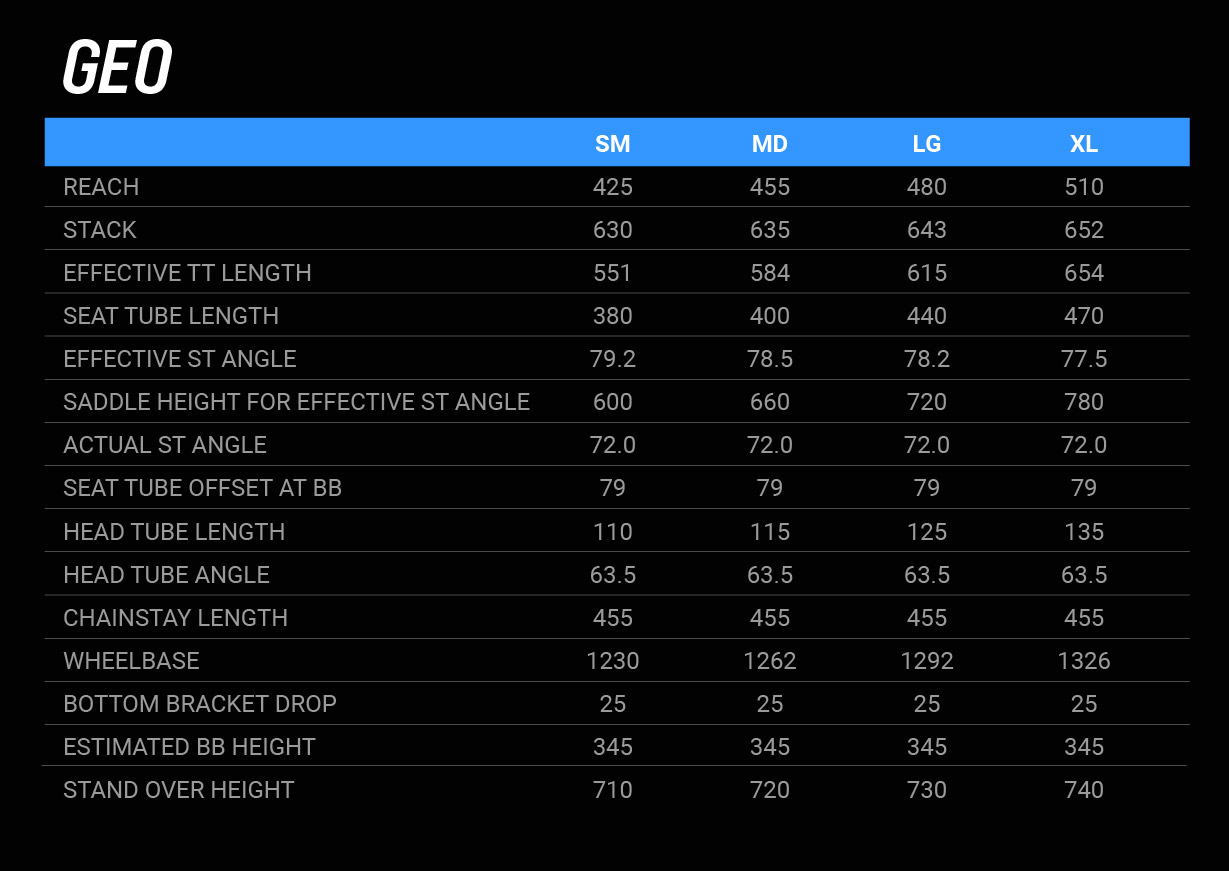
Transition doesn’t publish a geometry chart for the Repeater Powertrain in its mixed-wheel configuration, but says that the numbers are close, with the bottom bracket being a touch lower and the headtube slightly slacker.
The Builds
Transition offers two builds for the Repeater Powertrain, and unsurprisingly, both are very SRAM-focused. Due to the Powertrain integration, SRAM’s Transmission is an obvious choice for the gear changing, with GX and X0 T-Type builds on offer.
Both the GX AXS and the XO AXS builds feature the SRAM Reverb AXS seat post. Typically you wouldn’t find a Reverb AXS seat post on a SRAM GX-level bike as that would add significant cost, but due to the somewhat required integration with the AXS pods, it leaves little choice. We say “somewhat required” because you can run a mechanical dropper post, but the left-side AXS pod placement will interfere with a conventional under-bar remote, and forgoing it reduces some functionality of the Eagle Powertrain, such as the walk mode and the ability to change ride modes without taking your hand off the bar.
A RockShox ZEB fork, RockShox Vivid rear shock, and SRAM Code brakes round out the parts from SRAM’s catalog and both builds have solid wheel choices from DT Swiss or Crankbrothers. With the retail price of both builds reaching into five-figure territory, there aren’t any budget options here, but the X0 build gets upgraded suspension (ZEB Ultimate and Vivid Ultimate, vs. a ZEB Select and Vivid Select+ on the GX build), higher-end brakes, and a few other odds and ends.
Finally, the Repeater Powetrain comes with the OneUp EDC lite tool factory installed in the steerer tube — a nice touch.
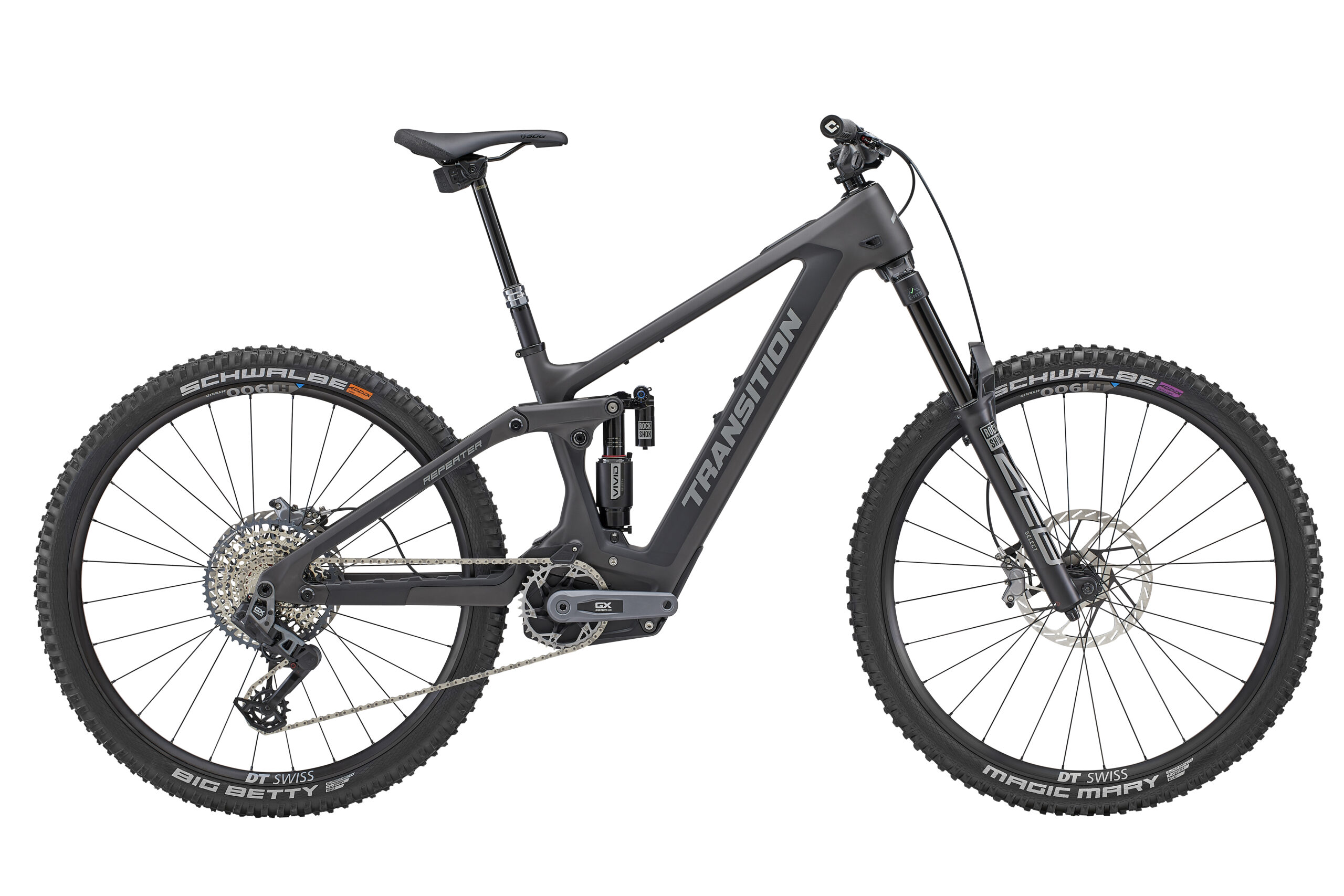
Here are the highlights for the two Repeater Powertrain builds:
- Drivetrain: SRAM GX Eagle Transmission
- Motor: SRAM Eagle Powertrain Drive Unit
- Battery: 720 Wh
- Fork: RockShox Zeb Select
- Shock: RockShox Vivid Select+
- Brakes: SRAM Code Bronze with SRAM HS2 220 mm rotors
- Wheels: DT Swiss H 1900 Spline
- Dropper Post: RockShox Reverb AXS (SM: 150 mm; MD-XL 170 mm)
- Drivetrain: SRAM XO Eagle Transmission
- Motor: SRAM Eagle Powertrain Drive Unit
- Battery: 720 Wh
- Fork: RockShox Zeb Ultimate
- Shock: RockShox Vivid Ultimate
- Brakes: SRAM Code Silver with SRAM HS2 220 mm rotors
- Wheels: Crankbrothers Synthesis E-Bike Alloy
- Dropper Post: RockShox Reverb AXS (SM: 150 mm; MD-XL 170 mm)
Some Questions / Things We’re Curious About
(1) How will the SRAM Eagle Powertrain perform in comparison to drive systems from Shimano, Bosch, Specialized, and Rocky Mountain?
(2) On paper, the Repeater Powertrain and the Nukeproof Megawatt Carbon are incredibly similar, but how will they compare out on the trail?
(3) The Repeater Powertrain is being marketed as a long-travel 29er, but Transition did sneak a flip chip in there for a mixed wheel setup — how will it perform as a mullet vs a 29er?
Bottom Line (For Now)
The SRAM Eagle Powertrain-equipped bikes are trickling out, and so far they’re all aggressive, long-travel options. Transition’s Repeater Powertrain looks like a solid take on updating their existing Repeater and integrating SRAM’s Eagle Powertrain, but with the available SRAM Eagle Powertrain bikes being so similar on paper, we’ll have to wait till we get them out on the trail to see how they stack up.

This is more bike than I’d be looking for if (when) I go the e-bike route.
Nevertheless, having only two power levels seems like it belongs more on a budget bike than a $12,000 bike.
Everything else about the new SRAM system seems well thought out, especially the reported complete absence of “clacking” when coasting downhill.